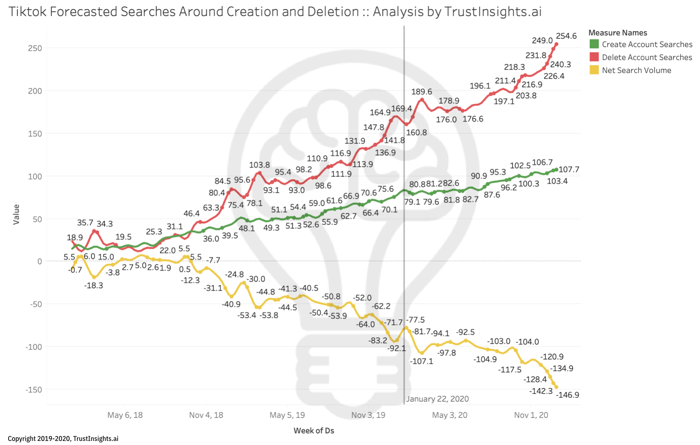When you hear the term “deep learning” in the context of AI, what does it mean to you? Much ink and many pixels have been spilled on the topic, from articles about neural network architectures to what the technology can do, but the idea is still shrouded in mystery. Let’s clear up the mystery.
Deep learning is data distillation. That’s it.
Just as we take beer and distill it to bourbon and whiskey, or herbs into essential oils, deep learning is all about the distillation of a very large dataset down to only the most important parts.
If you’ve ever seen an alcohol still, or a distiller in a laboratory, you’ve got the basic mental idea for how deep learning works. An enormous amount of data is the starting material, and then a variety of mathematical techniques are applied to the data, over and over again, to remove irrelevant stuff and increase the importance of relevant stuff. Unlike a bourbon still, a deep learning system may have hundreds of stages of distillation, but functionally, it’s still the same thing.
When you’re done with the distillation, you have an outcome that can be used. In the case of bourbon, you drink it. In the case of deep learning, you use the classification, regression, or prediction to make decisions about what to do, and potentially use that outcome in an automated fashion for the next batch of data.
When you hear about a deep learning model, in this analogy, that’s your still setup.
At the end of the day, AI is just math, not magic, and even the most sophisticated systems are understandable once you take away the jargon. Next time you’re in a discussion about how to use AI, think about what data you’d like to distill down to just the most important parts.

This week’s Bright Idea is a newly-cleaned up video from our talk at the Infoshare conference in Poland in 2019. Our original version had, quite frankly, terrible audio, but we recently received clean audio. The video is now eminently more listenable.
Watch the session now on Youtube >.

This week’s Rear View Mirror Data looks at everyone’s curious question when it comes to social networks: Tiktok. Should we? Shouldn’t we? Using a basket of 90 different search term variations – join Tiktok, quit Tiktok, new Tiktok account, delete Tiktok, etc. – we measured the United States search volume of searches about creating a new account and deleting an account. As Tiktok doesn’t publish any numbers about membership publicly, we use search data to infer intent of audiences – are they looking more to get started, or looking more to quit? Let’s see:

The green line represents searches related to people joining/creating an account with Tiktok. The red line represents searches related to people quitting Tiktok/deleting their account. The yellow line is the net – joins minus quits. The vertical line is today’s date; to the left is historical data, to the right is forecasted data.
What we see is plain: Tiktok is still likely shedding more members than it’s acquiring. We know, based on a leaked advertising pitch deck via AdAge that Tiktok only has approximately 30 million users within the US; the vast majority of its user base is in China.
The question is, does your brand belong there? By the data, if you’re in the United States, the answer is a qualified maybe. Joins have not flattened out – they continue to grow. Quits continue to grow as well, outpacing the joins, but that still means there’s enough of a growing audience to at least have a look. We recommend the standard strategy for any new social network. Join. Secure your name. Listen. Watch. Learn. And when the time comes, participate – first by interacting with others, then by creating your own content that fits the platform’s intent.
Methodology Disclosure: Trust Insights used search intent data for Tiktok based on 90 keyword permutations, scored with the AHREFS SEO tool, then forecasted with Google Trends data and Trust Insights proprietary forecasting software. The dataset was limited to searches in the United States in the English language. The timeframe of the study is January 1, 2018 to January 22, 2020. The date of extraction is January 22, 2020. Trust Insights is the sole sponsor of the study and neither gave nor received compensation for data used, beyond applicable service fees to software vendors.

- {PODCAST} In-Ear Insights: Marketing Analytics Skills and Techniques
- Data Analytics, Business Analytics, and Marketing Analytics
- What is an IBM Champion?
- Marketing Analytics Tip: The Fastest Way to See Your Digital Marketing Tech Stack
- 2020 Data-Driven Marketing Trends Report

Shiny Objects is a roundup of the best content you and others have written and shared in the last week.
Social Media Marketing
- Facebook has postponed ruining WhatsApp BGR
- Animals on social media and in movies, advertisements are often abused and under stress
- Dos and donts for elevating your Instagram content strategy via Agility PR Solutions
Media and Content
- 7 Video Content Marketing Strategies to Skyrocket Engagement via Brandwatch
- 5 PR Takeaways From NRF 2020 via Crenshaw Communications
- What Do High-Performance E-Commerce Websites Do Differently? Results from the 2020 KPI Study via Moz
Tools, Machine Learning, and AI
- Blockchain To Big Data: MBA Students Are Learning To Mix Business With Technology
- Image Reconstruction using Singular Value Decomposition (SVD) in Python via Python and R Tips
- Best of arXiv.org for AI, Machine Learning, and Deep Learning December 2019 via insideBIGDATA
Analytics, Stats, and Data Science
- Methods of Study Design Experiments Data Science 101
- How to Create 5 Custom Metrics in Google Analytics
- What is the definition of machine learning (vs classical statistics), and can methods such as MCMC and bootstrapping be considered ML? via Cross Validated
SEO, Google, and Paid Media
- Google plans to drop Chrome support for tracking cookies by 2022 via Ars Technica
- Observation on January 2020 Core Update DEJAN Marketing
- Official Google Webmaster Central Blog: Sunsetting support for data-vocabulary
Business and Leadership
- Marketers Deserve Enterprise Software That Doesnt Suck
- Agile Software Development: The Tips You Need to Implement It Successfully
- 6 Traits That Set Top Business Leaders Apart via Harvard Business School Working Knowledge
Join the Club
Are you a member of our free Slack group, Analytics for Marketers? Join 800 like-minded marketers who care about data and measuring their success. Membership is free – join today.
Upcoming Events
Where can you find us in person?
- Winbound, January 2020, Rennes, France
- Social Media Marketing World, March 2020, San Diego, CA
- MarTech West, April 2020, San Jose, CA
- ContentTech Summit, April 2020, San Diega, CA
- HELLO Conference, April 2020, New Jersey
- Women in Analytics, June 2020, Columbus, OH
- MAICON 2020, July 2020, Cleveland, OH
Going to a conference we should know about? Reach out!
Want some private training at your company? Ask us!
In Your Ears
Would you rather listen to our content? Follow the Trust Insights show, In-Ear Insights in the podcast listening software of your choice:
- In-Ear Insights on iTunes/Apple
- In-Ear Insights on Google Podcasts
- In-Ear Insights on all other podcasting software
Social follow buttons
Make sure you don’t miss a thing! Follow Trust Insights on the social channels of your choice:
Required FTC Disclosures
Events with links have purchased sponsorships in this newsletter and as a result, Trust Insights receives financial compensation for promoting them.
Trust Insights maintains business partnerships with companies including, but not limited to, IBM, Talkwalker, Zignal Labs, Agorapulse, and others. While links shared from partners are not explicit endorsements, nor do they directly financially benefit Trust Insights, a commercial relationship exists for which we may receive indirect financial benefit.
Conclusion
Thanks for subscribing and supporting us. Let us know if you want to see something different or have any feedback for us!












